5 Simple Questioning Techniques that Transform Classrooms
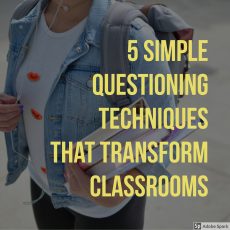
“Anyone? Anyone? Bueller?!” That iconic line from the movie Ferris Bueller’s Day Off demonstrates the futile nature of asking unanswered questions to a group of disinterested students. But, we’ve all been there, haven’t we? We wonder if it’s the question, our instruction, the students? Whatever it is, it is not the Dead Poet’s Society classroom we had envisioned when choosing teaching as a profession. We’d like to craft the questions that draw students to engage in lively debate. How do teachers do that? What is the magic spell they cast over their students?
While I can’t promise to make your classroom performance Oscar worthy, there are some strategies that WILL get your students talking. Here are five:
- Ask questions worth asking. Oftentimes our questions aren’t that interesting or just rote drill. Ask questions that require students to explain concepts, their thinking or personal connection to the content. Questions that include verbs at a higher Depth of Knowledge level typically are “discussion worthy” and will lead to greater debate, discussion and engagement. Also, asking more open ended questions, for example, instead of asking “What is the first step here?” you might ask “How might you solve this problem?” which provides students the opportunity to make their thinking transparent to the class.
- Prime the pump. After asking a question, require ALL students to respond to the question with a partner, on paper, or in some way in order to commit to a response, and THEN pose the question for class discussion. You’ll find that your students will be MUCH more eager to respond.
- Declare a minimum. Wait time is important for students to formulate an answer (6-10 seconds is ideal), but saying something like “I need at least 8 hands” OR “Raise your hand when you know,” which implies that everyone should raise their hand at some point, often yields great results.
- Catch and release. When a student responds to a question, avoid the urge to either approve or disapprove of the response. When a teacher declares something right or wrong, the conversation is over. Rather, ask the rest of the class if they agree or disagree with that student’s response and explain their reasoning. You can also ask, “Does anyone want to add on to that or amend it? If so, in what way and why?” That keeps the discussion flowing and engages the class.
- Declare no student off limits. We want all students to formulate an answer to our questions, not just a select few. If it’s worth asking during class time, then it is a valuable exercise for all students. One of the areas that new teachers, in particular, struggle philosophically is calling on students who don’t volunteer. Often they share that they are worried that they might embarrass a student who doesn’t know the answer. I will encourage them with this, “If you allow students to prime the pump and ask open ended questions worth asking, students will be much more comfortable responding.” If you find a student answers, “I don’t know.” You can respond with, “What did you and your partner discuss?” or “Tell me what thoughts you had when thinking about the question.” If we create an environment that only tolerates correct answers and does not make transparent the conceptions and misconceptions around ideas, then students won’t risk sharing ideas at all. It’s up to teachers to make sure students know that it is natural part of learning to process to expose and refine ideas.
Like all new routines in classrooms, these questioning shifts will take a few days to a week to hone. But, if you are faithful in implementing them, you WILL transform your classroom discussions! If you have an instructional coach in your building, invite him/her to observe you and help you tweak your mad questioning skills. A second set of eyes always helps.
Let’s do it, “O Captain, my Captain!” Get them talking!
As always, I’d love to hear what works for you (and might for me 🙂 ).
Resources:
Depth of Knowledge Wheel Webb, Norman L. and others. “Web Alignment Tool” 24 July 2005. Wisconsin Center of Educational Research. University of Wisconsin-Madison. 2 Feb. 2006.
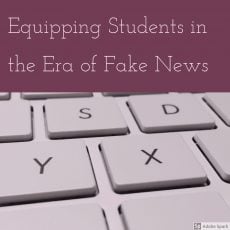



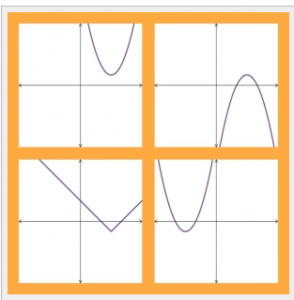


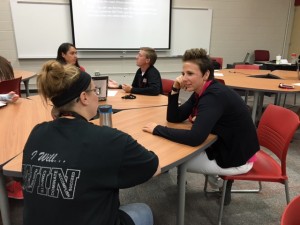
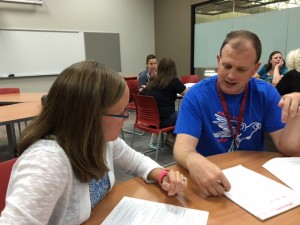
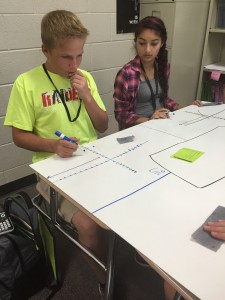
 rly require students to do a problem on a 1/2 sheet and turn it in. One of us can walk around to make sure students are on task and available for students with questions. The other can collect the sheets and offer quick feedback. We do this, typically at the beginning and end of class.
rly require students to do a problem on a 1/2 sheet and turn it in. One of us can walk around to make sure students are on task and available for students with questions. The other can collect the sheets and offer quick feedback. We do this, typically at the beginning and end of class.